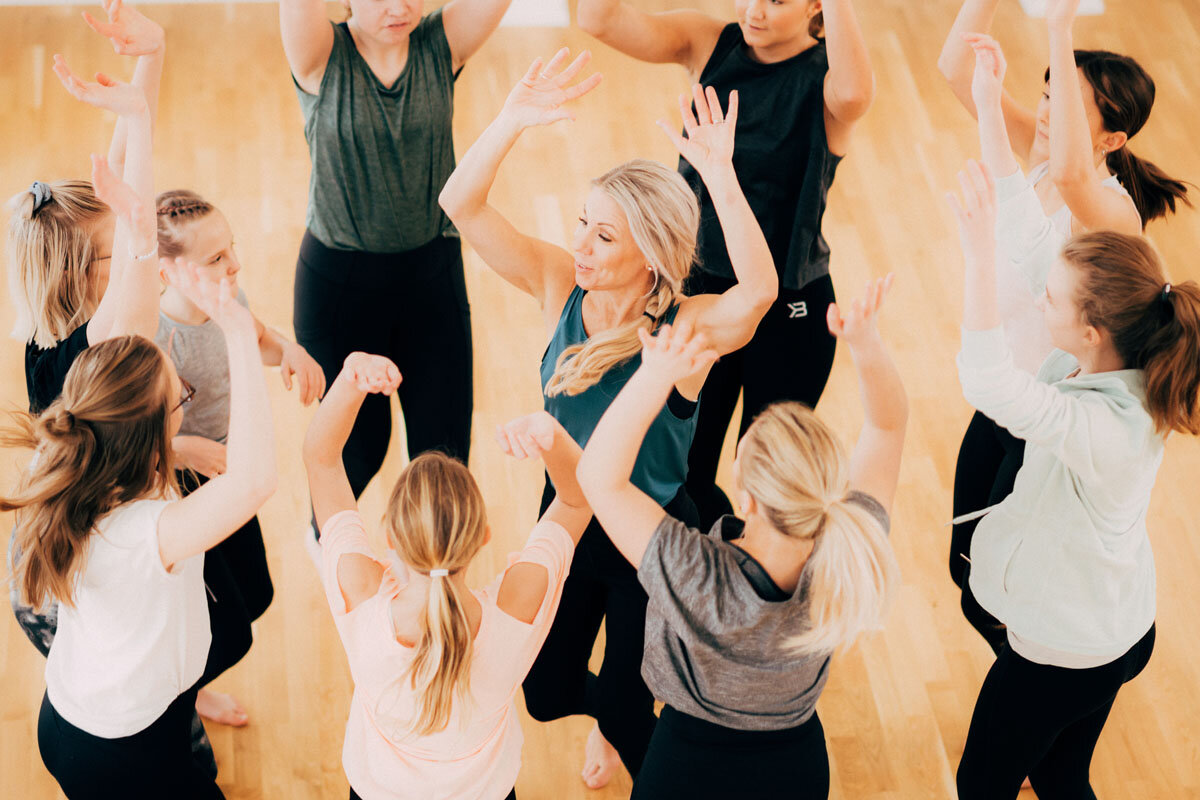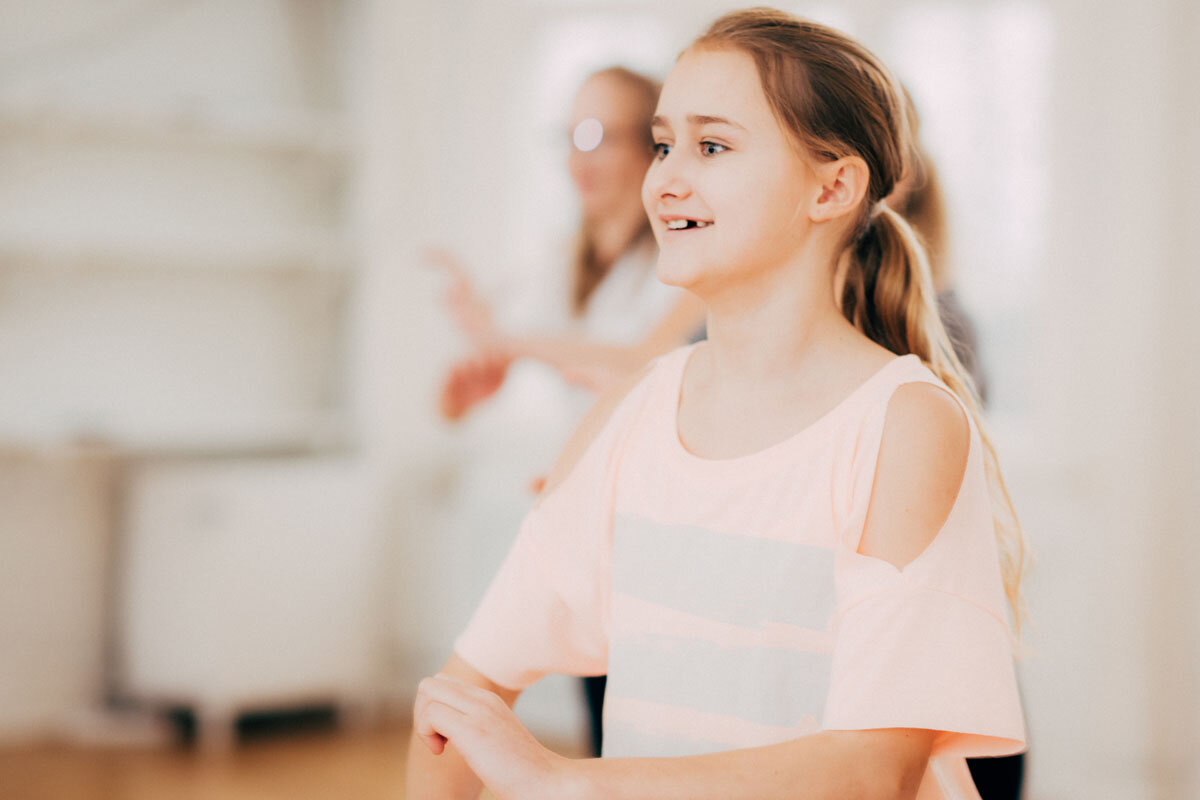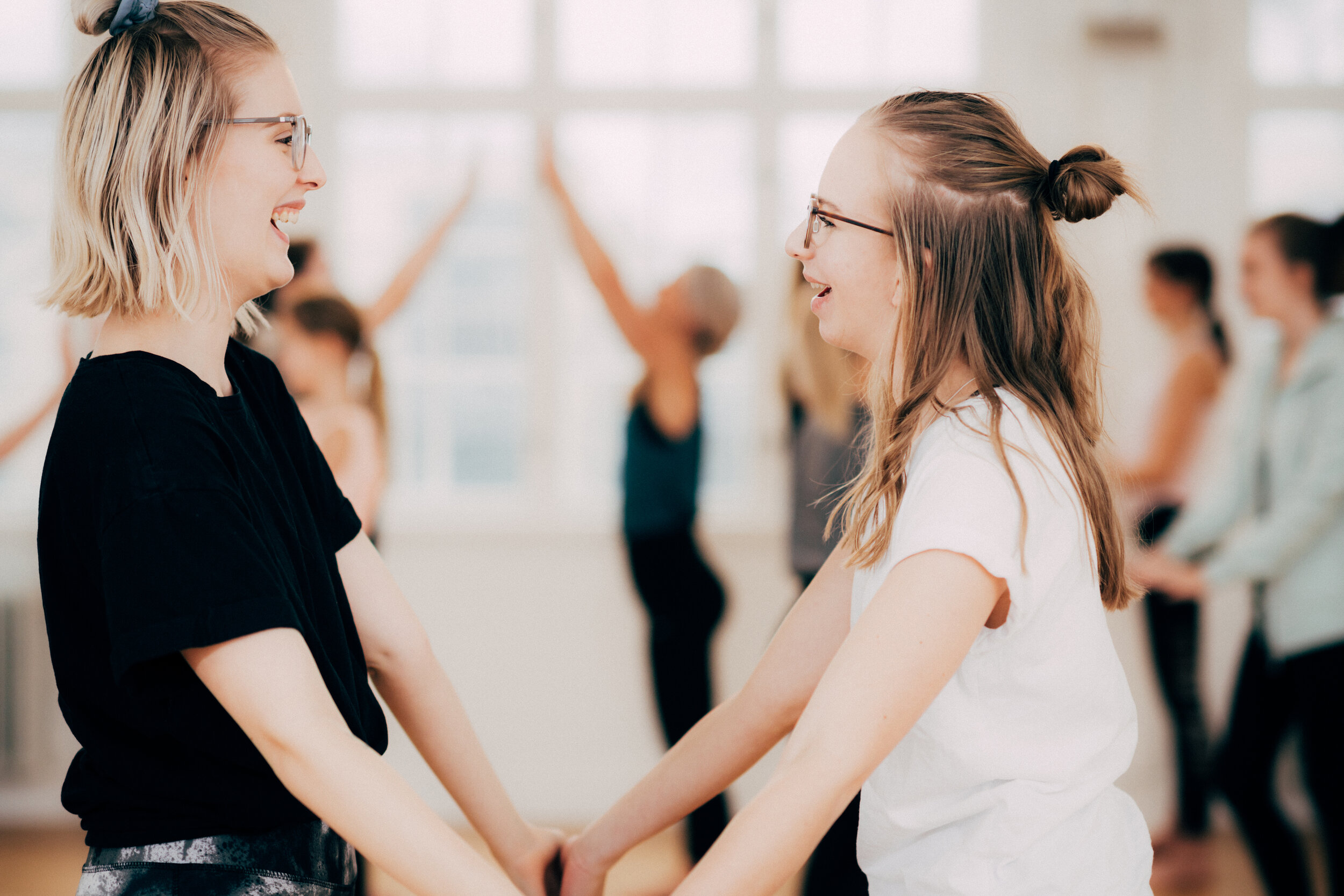Dance for Health
"We chose to make this a regular activity because we know it works. We started as a project and set certain goals, we wanted to see if it had an effect within the organization. When we had completed the project, we evaluated it. We then saw that the student health service had fewer visits and the cost that we put in had an effect so that it was worth every penny. "
Resurseffektiva insatser för att stärka psykisk hälsa efterfrågas allt oftare. ”Dans för Hälsa” är en vetenskapligt utvärderad metod som kompletterar elevhälsans arbete med stressreduktion hos unga. Rekrytering sker oftast via elevhälsan och dansen ges efter skoltid två gånger i veckan. Idag finns över 950 utbildade Dans för Hälsa-instruktörer i Sverige och Norden och över tusen ungdomar deltar regelbundet i insatsen. Implementering sker oftast i kommunal regi i samverkan med skolor, samt även inom psykiatri och primärvård. Det finns ett stort behov av en motpol till prestationssamhället och lyfta fram glädje. Kravlös dans är ett exempel på insats som kan möta det behovet.
"Dance for Health" was developed with the support of the Social Impact Lab at Örebro University in 2017. The method is based on the Dance Project with the aim of achieving social benefits for a vulnerable target group; young people with recurring mental health problems. To best realize the research idea, Dance for Health was formed with a focus on offering instructor courses in the method and providing support in the implementation process and follow-up. Dance for Health's key factors (joy of movement, resources, freedom from demands and community) have proved valuable; it is an appreciated method that has been shown to strengthen the health on several levels of many participating young people. Dans för Hälsa is run both as a non-profit organization (802545-8814) and a company (Dans för Hälsa Duberg AB).
Physical activity is a well-known and effective strategy for improving mental health. But sometimes it is difficult to get started or find the courage to join a group if you feel unsure. Dance for Health has spread widely across the country, see map. One reason for this is probably the undemanding socially inclusive atmosphere. Everyone is welcome, regardless of previous experience, and many young people who take part say that it is nice to have a free zone without performance. Dance is a popular and sought-after activity, which may help to maintain motivation over time. There is a scientific evaluation of the implementation process (Carlsson, N et al, 2018) that summarizes the following reasons for successful and rapid dissemination;
great need to address the problems of the target group
the research underpinning of the methodology
easy to adapt to local conditions.
Dans för Hälsa was named by Dagens medicin as "Innovator of the Year in Swedish healthcare" in 2019 with the motivation: "For having impressively mobilized and motivated people to better health, without expensive investments and with young people's own power. This year's Gold Scalpel winner has, with the support of evidence, methodically renewed the way healthcare works by taking advantage of what is healthy." And it is precisely this focus - taking advantage of the healthy - where there is much to gain. By strengthening resources, i.e. highlighting what works, the individual is reminded of the possibility of improving lifestyle habits with their own tools and thus being able to influence their health. The more perceived power and personal responsibility, the less need for care.
Förhoppningen är att Dans för Hälsas metod ska få fortsätta implementeras där resurser och möjligheter finns, så att så många som möjligt som har behov ska kunna ta del av insatsen. Kravlös dans har potential att utgöra ett komplement i arbetet med att stärka ungdomars psykiska hälsa, där behov finns. För att insatsen ska lyckas är det viktigt att det finns en förankring och en långsiktighet i planering & finansiering. Förutsättningar och rekommendationer för att arbeta med Dans för Hälsa finns HÄR. Tips: följ de sex rekommenderade stegen som finns HÄR -och inspireras av goda exempel*! Det centrala uttrycket i dansen är “Kom som du är”. Gällande implementering skulle man kunna säga “Börja där du är”. / Anna Duberg, grundare av Dans för Hälsa och ansvarig för metod & kurser
[Dance for Health instructor courses are two days plus a boost day, and provide a knowledge base in background, research, key factors, methodology and provide the practical tools you need to start the activity in your context. In order to call the activity Dance for Health, it is assumed that the instructor has completed the course, follows the practice's methodology and key factors and directs the initiative to a target group with a need to strengthen health. The model also includes collaboration with health care providers and that the dance is offered to participants free of charge].
Dans för Hälsa arbetar för ungdomars psykiska och fysiska hälsa genom insatser som utgår från delaktighet, trygghet och vetenskaplig grund. Vår verksamhet genomsyras av respekt för demokratiska värderingar, alla människors lika värde och en stark tro på ungas egen kapacitet. Dans för Hälsa följer utbildningsföretagens etiska regler. Varje ung person som nås av metoden ska känna sig sedd, välkommen och betydelsefull.
Dans för Hälsa® är ett registrerat varumärke hos Patent- och registreringsverket (PRV). Varumärkesskyddet omfattar både ord- och figurmärke inom klass 41 (utbildning, friskvård och dansverksamhet) och säkerställer att konceptet kan användas och utvecklas långsiktigt, både nationellt och internationellt. Utöver varumärkesskyddet omfattas verksamhetens utbildningsmaterial, kursmanualer, presentationer, logotyper och digitala resurser av upphovsrätt enligt svensk lag (1960:729). Detta innebär att allt innehåll som produceras av Dans för Hälsa är skyddat mot otillåten kopiering eller vidareanvändning utan tillstånd.
dance for health key factors:
- JOY OF MOVEMENT
- RESOURCES
- RESPONSIBILITY
- COMMUNITY
* Selection of good examples:
Dance for Health, Gävleborg / Dance for Health, Region Örebro Län / Dance without demands, Jönköping / Dance for Health, Region Skåne / Dance without demands, Stockholm / Dansa Pausa, Karlskoga / Dance for Health, Region Halland / Dance for Health, Vallentuna / Dance for Health, Tierp municipality / Dance for Health, Tyresö / Dance without demands, Östhammar municipality / Ängens vårdcentral, Örebro / Dance for Health, Nyköping.






